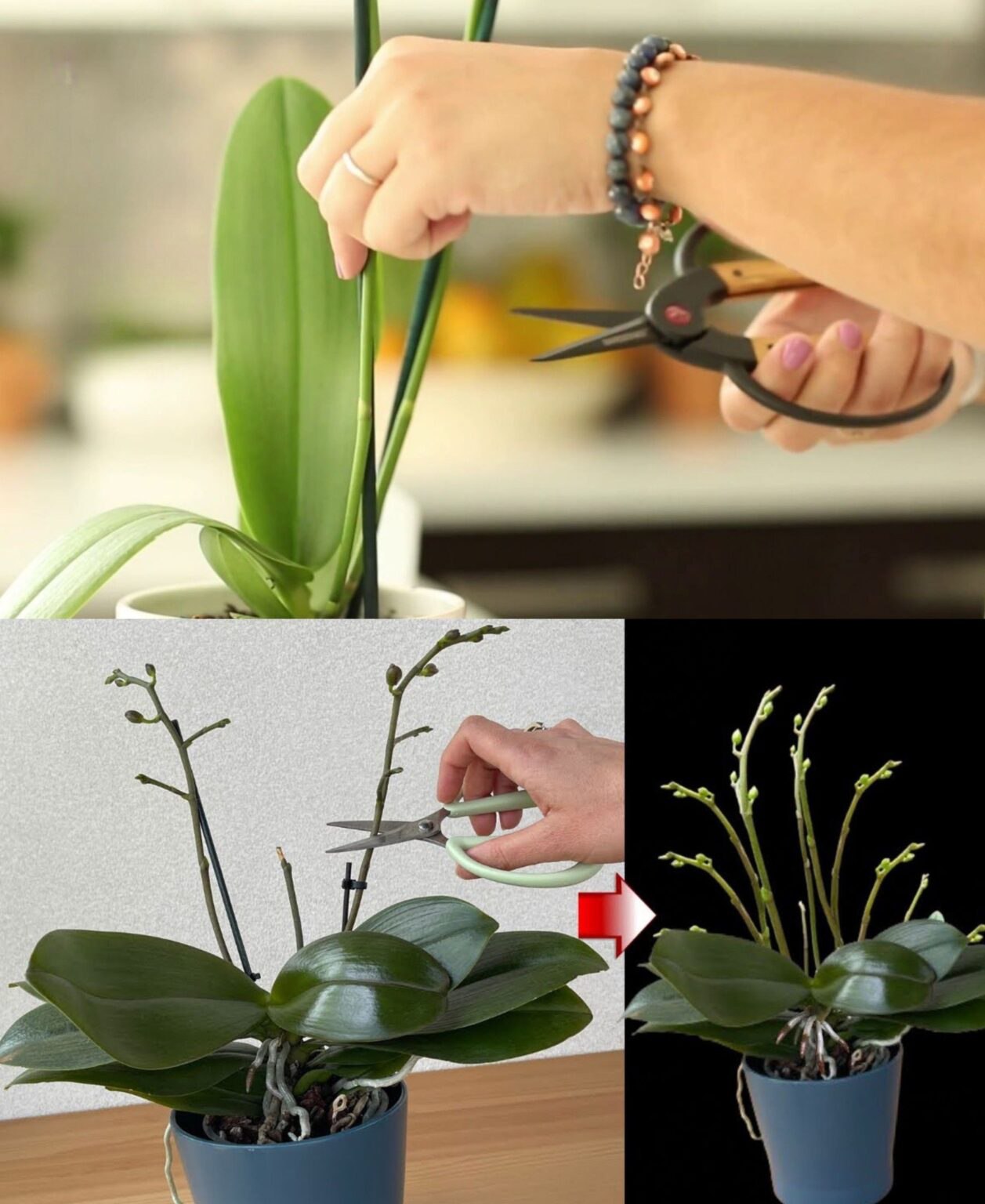ADVERTISEMENT
Take a good look at your orchid stem. If the flowers have already fallen off, you’ll notice that the stem may be dry, brown, or discolored at the top. Look for a healthy green section just below the spent flowers—this is the area you want to focus on.
For Phalaenopsis orchids, you have a few options:
– **Cut Above the Node**: If the stem is still green and healthy below the flowers, you can cut just above a node (a small bump or bump-like structure on the stem). This will stimulate the plant to grow a new flower spike from that node.
– **Cut the Stem Entirely**: If the entire stem is brown or withered, or if you want to start fresh, you can trim the stem down to the base of the plant.
#### **Step 3: Make the Cut**
Once you’ve identified the ideal cutting point, use your sterilized scissors to make a clean cut. Make sure the cut is straight to minimize damage to the plant. If you’re cutting above a node, leave about half an inch of stem above the node to give it enough space to regenerate.
#### **Step 4: Clean and Monitor the Plant**
After cutting the stem, clean the orchid’s pot and the surrounding area to ensure no bacteria or pests are present. You may notice a small amount of sap or moisture coming from the cut area—don’t worry, this is normal!
#### **Step 5: Place Your Orchid in Ideal Conditions**
After the cut, place your orchid in a warm, indirect light spot with good air circulation. Avoid direct sunlight, as it may stress the plant. Make sure the soil or orchid mix stays slightly moist, but don’t overwater.
Within **24 hours**, you’ll start to see your orchid respond to the cut. The healthy part of the stem will begin to focus its energy on recovery, and you may even notice the appearance of a small new shoot or bud emerging from the cut area.
—
### **The 24-Hour Transformation You Won’t Believe!**
The first 24 hours after cutting an orchid stem are a critical period for the plant. If done correctly, you may notice one of the following transformations:
1. **New Growth**: The most exciting part is the emergence of a new flower spike or shoot from the node you’ve cut above. While it may take a few weeks for full blooms to develop, this early growth is the first sign that your orchid is ready to bloom again!
2. **Faster Healing**: Within just one day, you’ll notice that the cut area starts to heal over, with no sign of rot or infection. The plant will prioritize its energy to grow the healthiest shoots possible.
3. **Healthy Roots**: If you’ve cut the stem entirely to the base, it’s likely your orchid will focus on growing new roots, leading to a stronger plant in the long run.
—
### **Tips for Long-Term Orchid Care**
– **Water Properly**: Orchids prefer being watered when the soil mix feels dry to the touch, but avoid letting them sit in water. Overwatering can lead to root rot.
– **Fertilize Monthly**: Orchids benefit from being fertilized every 2 to 4 weeks during the growing season (spring and summer) to encourage blooming.
– **Humidity**: Orchids thrive in humidity levels of 50-70%. If your home is dry, consider using a humidity tray or misting the plant occasionally.
—
### **Conclusion**
Cutting an orchid stem might seem like a drastic step, but it’s a fantastic way to breathe new life into your plant and encourage it to bloom again. In just 24 hours after making the right cut, you’ll likely notice the beginnings of new growth. Whether you’re aiming to encourage a new flower spike or give your plant a fresh start, this simple technique can truly transform your orchid into a beautiful and thriving centerpiece for your home.
So, go ahead—try this easy and exciting orchid care hack. In no time, your orchid will be blooming again, and you’ll be able to enjoy its breathtaking flowers all over again! 🌸✂️
